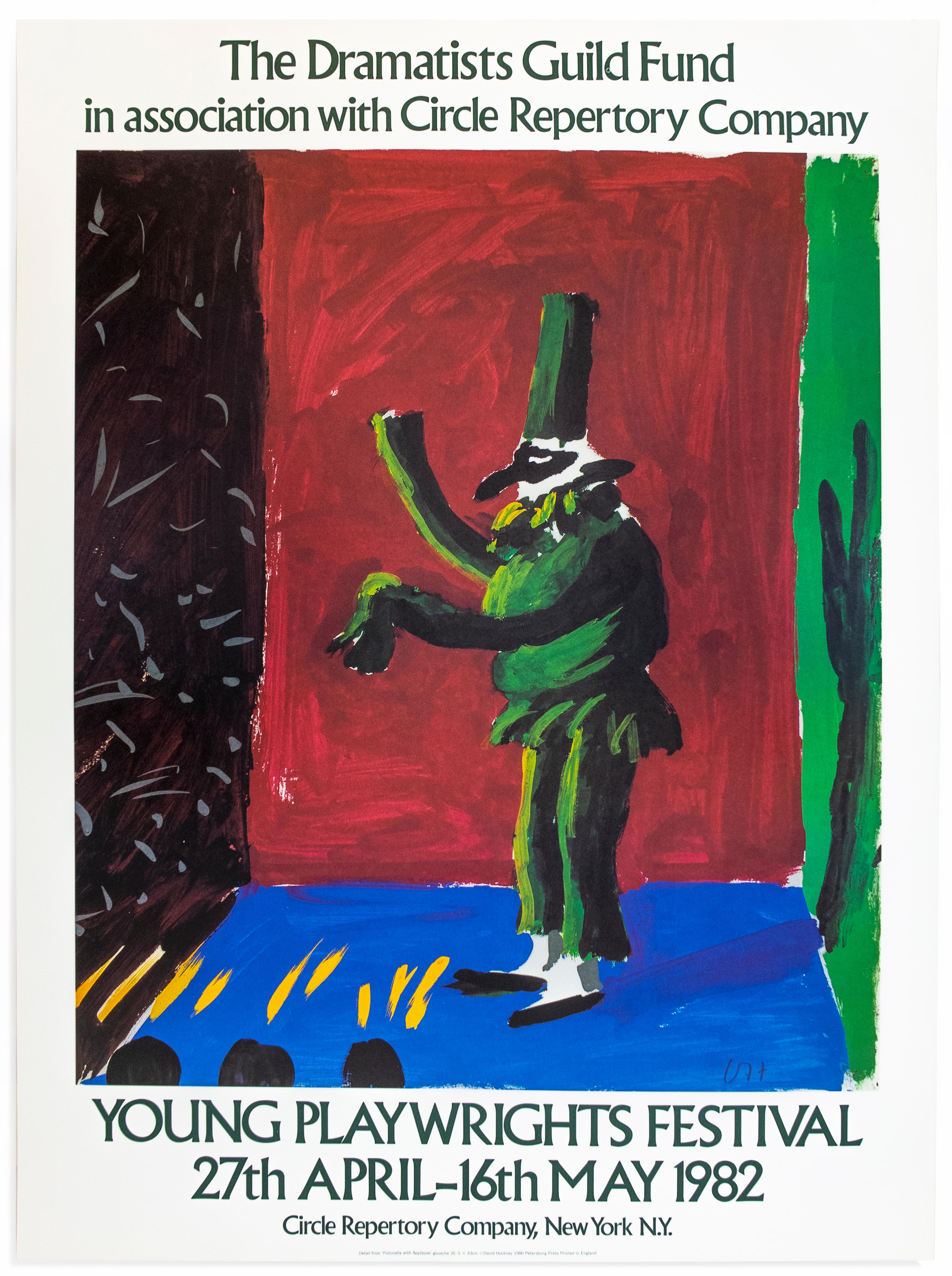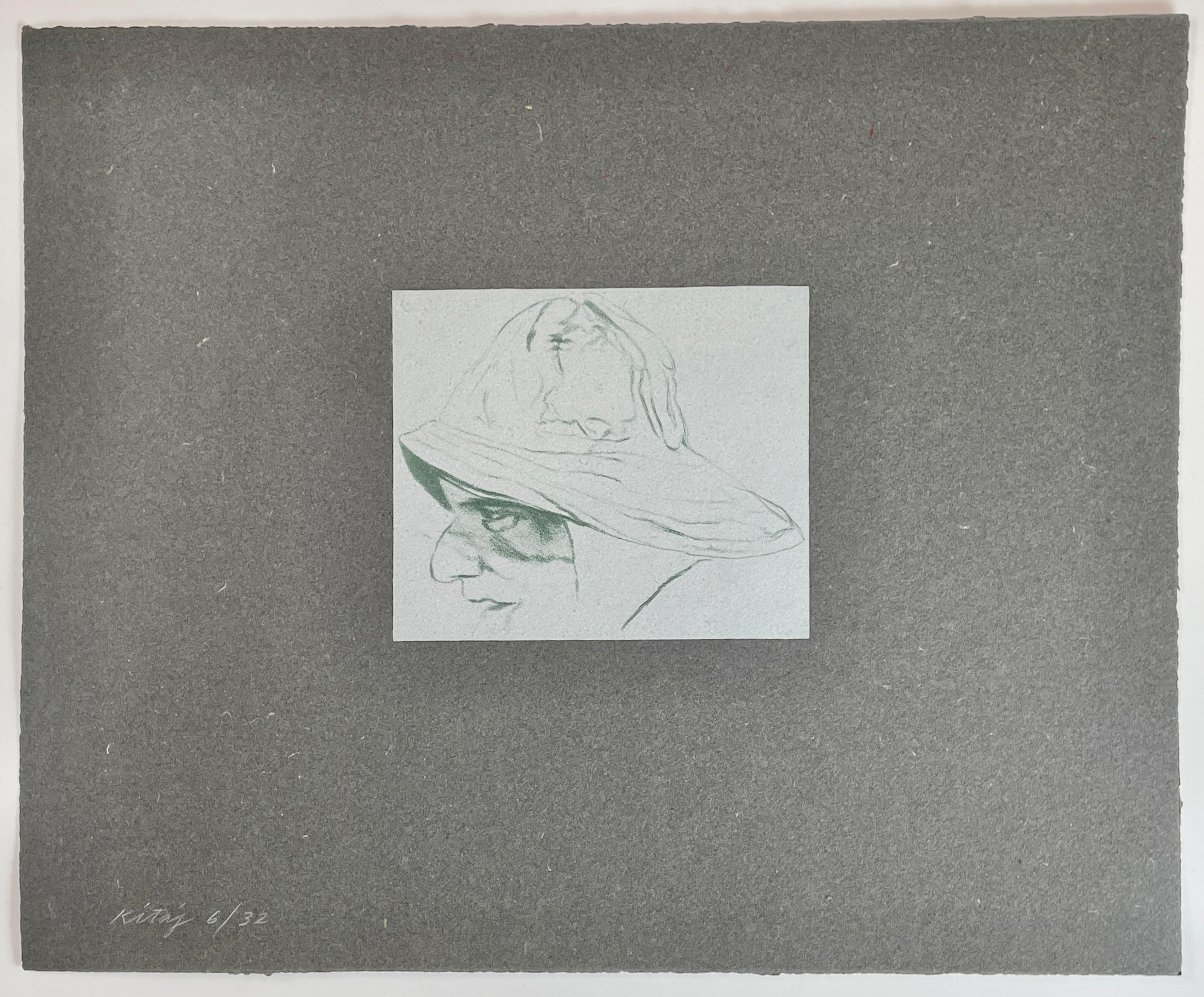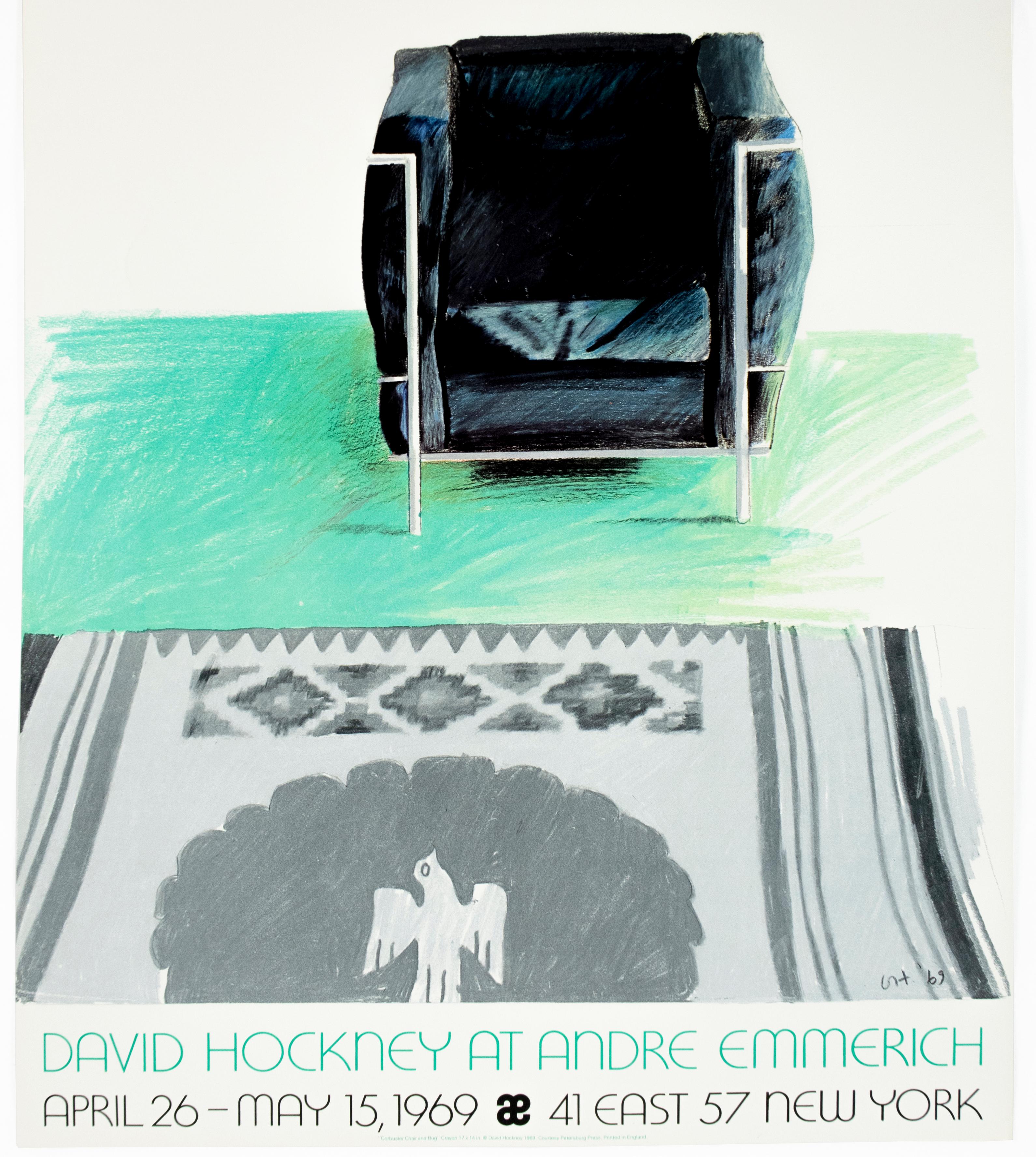Items Similar to Juchiteca's Platicando (Juchitecan Women Talking)
Want more images or videos?
Request additional images or videos from the seller
1 of 11
Francisco ZúñigaJuchiteca's Platicando (Juchitecan Women Talking)1985
1985
About the Item
This artwork titled "Juchiteca's Platicando (Juchitecan Women Talking) 1985 is an original colors lithograph on Wove paper by Costa Rican/Mexican artist Francisco Zuniga, 1912-1998. It is hand signed, dated and numbered 72/150 in pencil by the artist. The size is 22.75 x 30 inches. It is in excellent condition, 2 small pieces of hanging tape remaining on the back at the top edge of the sheet from previous framing.
About the subject:
This print, Juchitecas Platicando (Juchitecán Women Talking), depicts three statuesque women from the city of Juchiteca in the state of Oaxaca in southeastern Mexico. Juchiteca is a largely matriarchal society, in that women control the economy and hold positions of power. It is also home to a large Zapotec population, indigenous to the land that became Mexico. Francisco Zúñiga lived within the community of Juchiteca for a period of time and adopted the women of the area as one of the central motifs of his artwork, both on paper and in sculpture. Through his selective coloring, Zúñiga highlights the women’s clothing, including their recognizable huipiles or tunics, conveying the pride in locally made textile art
About the artist:
Internationally acclaimed sculptor and printmaker Francisco Zuñiga was born in Costa Rica. He studied drawing, stone sculpture, and engraving at the School of Fine Arts in San Jose. Later, in 1936, he studied stone carving at La Esmeralda in Mexico City. He was appointed to the faculty of La Esmeralda where he remained until his retirement in 1970.
Zuniga's art reflects a love and respect for Central American people and traditions. In 1972, he created his first lithograph. As a complement to his emotionally powerful sculpture, Zuniga's prints articulate the sensitivity and sensuality of the human figure. He has been the recipient of numerous international prizes and awards. His work is exhibited frequently in prominent galleries throughout the world and may be found in the permanent collections of twenty-nine museums, including the Metropolitan Museum of Art in New York, the Los Angeles County Museum, the Mexican Museum in San Francisco, and the Phoenix Art Museum.
In 1936, Francisco Zuniga left San Jose, Costa Rica, where he had studied drawing at the School of Fine Arts and worked as an assistant in his father's studio, a workshop which produced religious sculpture for the churches and convents in and around the city. His destination was Mexico City. It was from there that he would begin an illustrious career as a sculptor and draftsman. Zuñiga's exploration into the nuances of volume, in line and space, are demonstrated in this, the most complete exhibition of his work to be shown in more than a decade.
Mexico City in 1936 was, even then, one of the major art centers of the Americas. As such it witnessed and participated in many of the frenzied and controversial art movements which reflected the political and intellectual climate of the first three decades of the twentieth century. Muralism, the graphic arts, the incorporation of in-ternational movements had produced an artistic climate, which would eventually attract to Mexico international artists and intellectuals such as Sergei Eisenstein, André Breton and Antonin Artaud. Then as now, Mexico City was a major world capital with the infrastructure necessary to exhibit and expose new aesthetic concepts.
For all these reasons it was the most obvious destination of choice for Zuñiga. In Mexico he worked with the painter Manuel Rodríguez Lozano, and would become one of the founders of La Esmeralda, the National School of Painting and Sculpture, teaching there between 1938 and 1970. Zuniga also fulfilled commissions for numerous public monuments, but between 1960 and 1980, he began to work exclusively on his studio projects. At the time of his death in 1998, his work would be part of major museum collections internationally.
Zuniga's signature sculptures, massive female figures sculpted in onyx or cast in bronze, emphasize an ongoing exploration of figurative representation in Western Art.
In Juchitecas en Conversación (1985) a standing female figure with crossed arms faces two figures seated on a bench. The figure closest to her rests her hand on a water jug fully facing the first, while the third, body half turned toward the group, gestures toward them with her left arm. The elongated heads and necks are in direct contrast to the full, earthy bodies of all three. In posture and gesture these figures, with their monumental mass and volume, suggest a relationship of community and of union between women, a theme basic to Zuñiga.
Other elements catch the eye: the water jug, the dress. The presence of these elements has often been a reason for categorizing Zuñiga's work as an example of regional representation, i.e. archetypes of indigenous women. Yet in focusing on the posture, gesture and composition in this work and others, Zuñiga is utilizing a juxtaposition of classical sculptural language with indigenous models. You might feel tempted to focus on the appearance of the model, but you should not overlook the stance, the composition, the regal allusion to the classical Western tradition.
This issue becomes even more evident in the pastel and charcoal Dos Mujeres de Pie (1977). Two nudes stand slightly off center from each other and face to face. We see before us the full front and full back view of two women. Full-figured, even corpulent, they are full-hipped with legs and feet firmly planted on the earth.
In Juchitecas en Conversación (1985) a standing female figure with crossed arms faces two figures seated on a bench. The figure closest to her rests her hand on a water jug fully facing the first, while the third, body half turned toward the group, gestures toward them with her left arm. The elongated heads and necks are in direct contrast to the full, earthy bodies of all three. In posture and gesture these figures, with their monumental mass and volume, suggest a relationship of community and of union between women, a theme basic to Zuñiga.
Museums holding his works in their permanent collections include the San Diego Museum of Art, the New Mexico Museum of Art, the Metropolitan Museum of Art and the Museum of Modern Art in New York, the Museo de Arte Moderno in Mexico City, the Dallas Museum of Art, the Phoenix Art Museum, the Ponce Museum of Art in Puerto Rico, and the Hirshhorn Museum and Sculpture Garden in Washington, D.C.
- Creator:Francisco Zúñiga (1912 - 1998, Costa Rican)
- Creation Year:1985
- Dimensions:Height: 22.75 in (57.79 cm)Width: 30 in (76.2 cm)Depth: 0.01 in (0.26 mm)
- Medium:
- Movement & Style:
- Period:
- Condition:
- Gallery Location:San Francisco, CA
- Reference Number:
About the Seller
5.0
Platinum Seller
These expertly vetted sellers are 1stDibs' most experienced sellers and are rated highest by our customers.
Established in 1999
1stDibs seller since 2017
682 sales on 1stDibs
Typical response time: 1 hour
- ShippingRetrieving quote...Ships From: San Francisco, CA
- Return PolicyA return for this item may be initiated within 7 days of delivery.
More From This SellerView All
- Maurice Chevalier, Casino de ParisBy Charles KifferLocated in San Francisco, CAThis artwork titled "Maurice Chevalier, Casino de Paris" created 1925 is a lithographic poster on paper by French noted artist Charles Kiffer, 1902-1...Category
Early 20th Century Realist Figurative Prints
MaterialsLithograph
- Le Repos du SoldatBy Théophile Alexandre SteinlenLocated in San Francisco, CAArtist: Theophile Alexandre Steinlen (Swiss, 1859-1923) Title: Le Repos du Soldat Year: c.1915 Medium: Lithograph Edition: Numbered 68/100 in pencil Paper: Wove Image size: 1...Category
Early 20th Century Realist Figurative Prints
MaterialsLithograph
- Retour de GuerreBy Théophile Alexandre SteinlenLocated in San Francisco, CAArtist: Theophile Alexandre Steinlen (Swiss, 1859-1923) Title: Retour de Guerre Year: 1915 Medium: Lithograph Edition: Numbered 97/100 in pencil Paper: Wove Image size: 11.5 ...Category
Early 20th Century Realist Figurative Prints
MaterialsLithograph
- Pichets, Tasse et CerisesLocated in San Francisco, CAThis artwork "Pichets, Tasse et Cerises" c.1970, is an original colors lithograph by French artist Frederic Vidalens, 1925-2004. It is hand signed and numbered 83/175 in pencil by th...Category
Late 20th Century Realist Figurative Prints
MaterialsLithograph
- Classe 17By Théophile Alexandre SteinlenLocated in San Francisco, CAArtist: Theophile Alexandre Steinlen (Swiss, 1859-1923) Title: Classe 17 Year: 1917 Medium: Lithograph Edition: Numbered 61/100 in pencil Paper: Wove Image size: 10.5 x 14.25 inches ...Category
Early 19th Century Realist Figurative Prints
MaterialsLithograph
- l'Adieu (The Fairwell)By Théophile Alexandre SteinlenLocated in San Francisco, CAArtist: Theophile Alexandre Steinlen (Swiss, 1859-1923) Title: L'Adieu (The Fairwell) Year: 1916 Medium: Lithograph Edition: Numbered 381/400 in pencil Paper: Creme wove Image...Category
Early 20th Century Realist Figurative Prints
MaterialsLithograph
You May Also Like
- BarLocated in Brooklyn, NYThis print by Nicole Eisenman depicts one of her signature motifs: leisure time in bars and saloons, as also depicted in some of her paintings like "Br...Category
Early 2000s Realist Figurative Prints
MaterialsLithograph
- Vintage David Hockney poster Young Playwrights Festival 1982By (after) David HockneyLocated in New York, NYA masked performer gestures his hands, wearing bright green garb, a long hat, and jaunty black shoes with white socks. Hockney paints in loose strokes of color: garnet, sapphire, bright yellow, and emerald green. This vintage David Hockney...Category
1980s Realist Figurative Prints
MaterialsLithograph
- Vintage David Hockney Poster Galerie der Spiegel 1970 (Boy in an Egg) with birdBy David HockneyLocated in New York, NYThis vintage exhibition poster reproduces The Boy Hidden in an Egg by David Hockney from his Six Fairy Tales from the Brothers Grimm, 1969. A shirtless young man curls up inside a dark grey speckled egg, as a small bird looks on. The poster was produced in 1981 to commemorate Hockney’s 1970 exhibition at Galerie Der Spiegel...Category
1970s Realist Figurative Prints
MaterialsLithograph
- Cap'n A.B Dick (A) gray fisherman portrait sou'wester hat R.B. Kitaj lithographBy Ronald Brooks KitajLocated in New York, NYKitaj’s drawing is of a fisherman in profile, wearing a sou’wester: a collapsible rain hat. The image is a wry portrait, ostensibly of Albert Blake Dick, ...Category
1970s Realist Portrait Prints
MaterialsLithograph
- Vintage David Hockney poster, XIV Olympic Winter Games 1984, The SkaterBy David HockneyLocated in New York, NYVintage David Hockney poster for the XIV 1984 Olympic Games in Sarajevo published as part of the official 1984 Olympic Fine Art Posters Series. The Olympic Committee commissioned 15 ...Category
1980s Realist Portrait Prints
MaterialsLithograph
- Vintage Le Corbusier '69 David Hockney Exhibition Poster Kilim southwest rugBy (after) David HockneyLocated in New York, NYShading in bright turquoise above a Southwestern style thunderbird Kilim rug adorns this original exhibition poster for David Hockney's 1969 show at Andre Emmerich, New York. This po...Category
1960s Realist Interior Prints
MaterialsLithograph
Recently Viewed
View AllMore Ways To Browse
Women Made
Size 2 Womens
Womens Size Large
Women In Garden
Bronze Women
Prints 20th Century Women Artists
Women In Bronze
Vintage Women Top
San Francisco Lithograph
Talking Homes
Seated Women
Womens Legs
Vintage Women Faces
Vintage Western Women
Head Sculpture Women
Vintage Collection Womens Clothing
Vintage Garden Dress
A Women Head Sculpture





